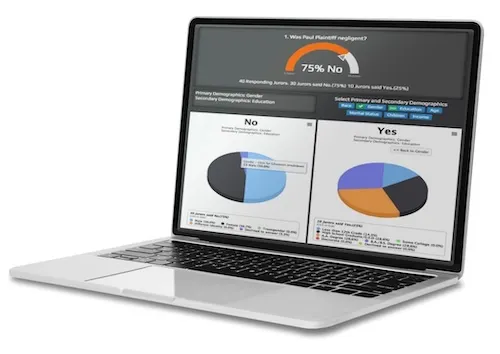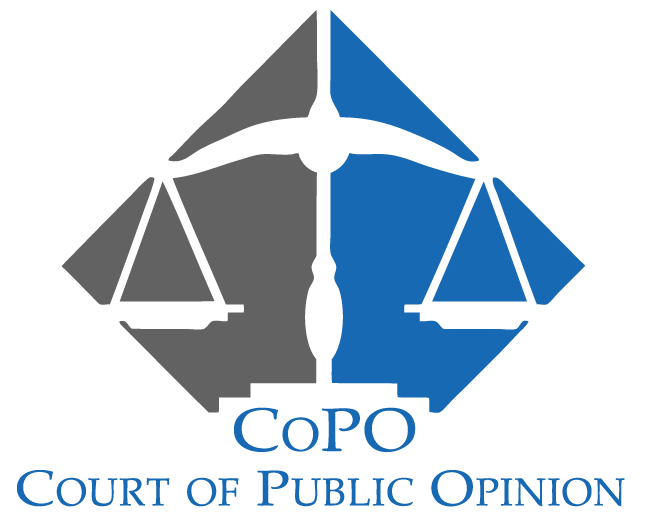Behind the Verdict: What Jurors Really Think
How Court of Public Opinion reveals not just what jurors decide, but why

When a jury reaches a verdict, the decision is only part of the story. What matters just as much is how jurors got there: what evidence captured their attention, which testimony they trusted, and whether different groups of jurors reacted in different ways. Without that insight, attorneys are left making educated guesses about what resonated and what did not.
Court of Public Opinion eliminates that uncertainty. Our tools are designed to look beyond the verdict, providing data on juror attention, credibility assessments, and demographic patterns. These insights not only strengthen trial preparation but also provide attorneys with leverage in mediation and arbitration, where understanding strengths and vulnerabilities can drive settlement outcomes.
Rate-My-Case / Relevancy Meters
In a recent focus group involving a fire injury case, the central question was who bore the greater share of responsibility: the property owner or the contractor who performed the electrical work. Using CoPO’s Rate-My-Case, jurors individually rated the persuasiveness of the testimony and evidence. Counsel expected jurors to place primary fault on the property owner. Instead, a significant portion of jurors pointed to the contractor, noting that the wiring appeared careless and poorly maintained. That feedback allowed the attorney to rebalance the way liability was presented, emphasizing safety obligations while anticipating juror skepticism about the contractor’s role.

Demographic Breakdowns

Court of Public Opinion’s Demographic Breakdowns provided clarity on how jurors from different backgrounds viewed the dispute. Overall, the panel leaned toward awarding damages, but the breakdowns showed that older jurors and women were significantly more convinced by the plaintiff’s evidence, while younger jurors were more skeptical about whether the owner should be held primarily responsible. This insight allowed counsel to refine voir dire strategy for trial and gave them a realistic understanding of how different audience compositions might affect outcomes.
Post-Verdict Questionnaire
After the fire case deliberations concluded, jurors were invited to complete Court of Public Opinion’s Post-Verdict Questionnaire. Their responses shed light on why they reached their conclusions and how they weighed the evidence overall. Some jurors emphasized the photographs of the burned wiring as the most persuasive factor, while others pointed to the contractor’s testimony as leaving doubts unresolved.
After trial, attorneys often try to speak with jurors to learn what influenced their decision, but those conversations are informal and inconsistent. The Post-Verdict Questionnaire gave counsel a more structured, reliable record of juror perspectives.
These responses highlighted themes that had not fully emerged during deliberation. In mediation, the feedback gave attorneys concrete talking points to address perceived weaknesses. In trial preparation, it helped them anticipate where jurors might need clearer explanations or stronger evidence.
Why It Matters
Litigation is resource-intensive and unpredictable. Mediation and arbitration may be more streamlined than trial, but persuasion still matters. By looking behind the verdict, CoPO helps attorneys see not only what jurors decided but also why. In the fire case, Rate-My-Case, Relevancy Meters, and Demographic Breakdowns worked together to provide a full picture of juror reasoning. With that knowledge, counsel was able to adjust arguments, strengthen negotiation strategy, and approach trial with greater confidence.
Litigation is costly and complex. With CoPO, attorneys can access reliable jury feedback cost-effectively, then use it to present more effectively at trial and to shape negotiation strategy in mediation and arbitration.
To see how CoPO’s tools can strengthen your next case, contact us for a demonstration.
Written by Candy Elliott


